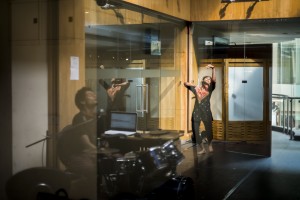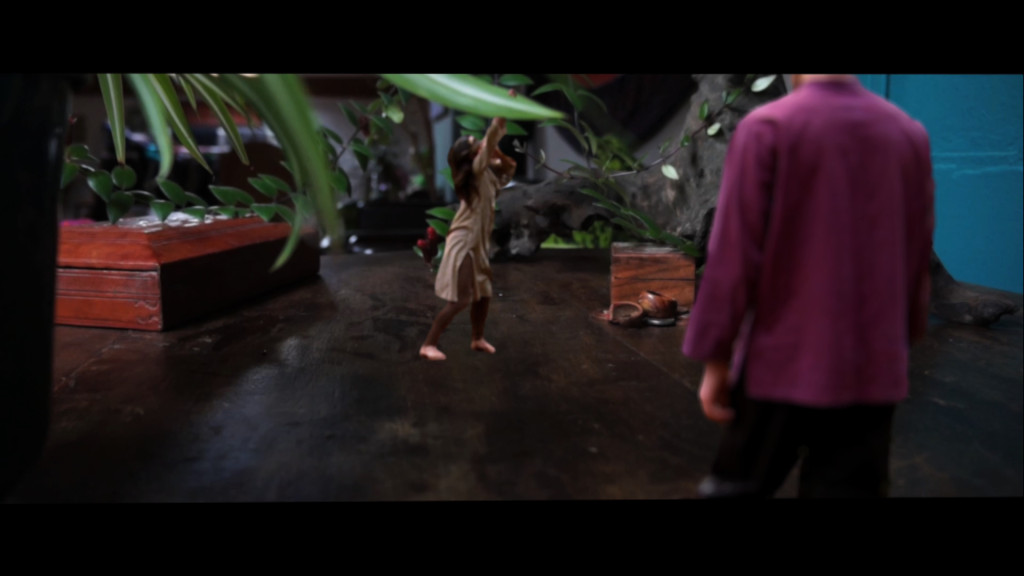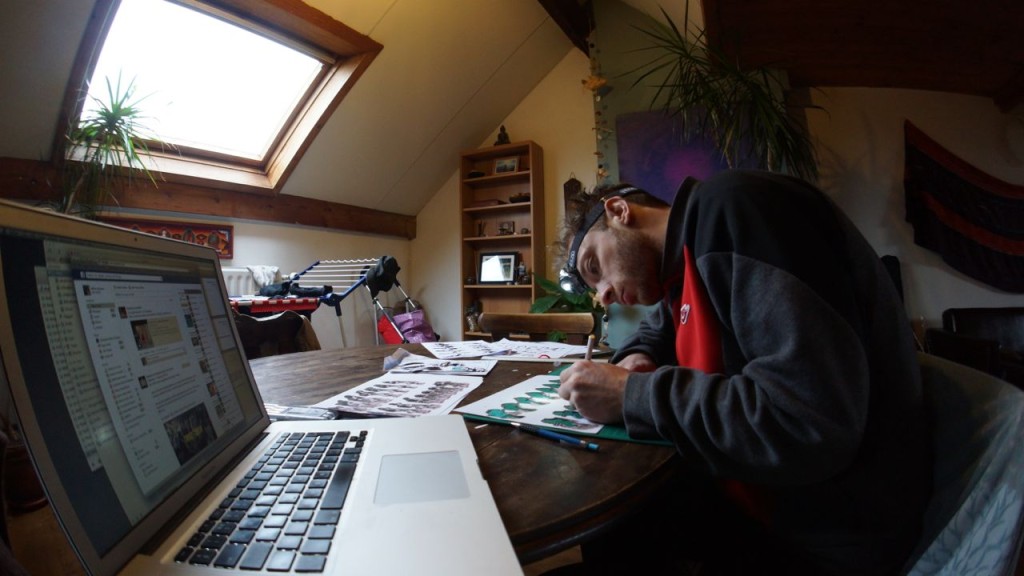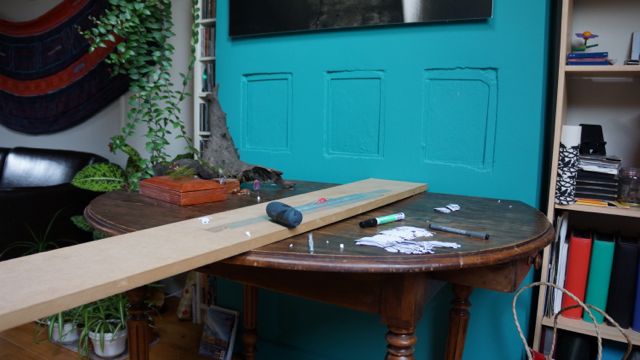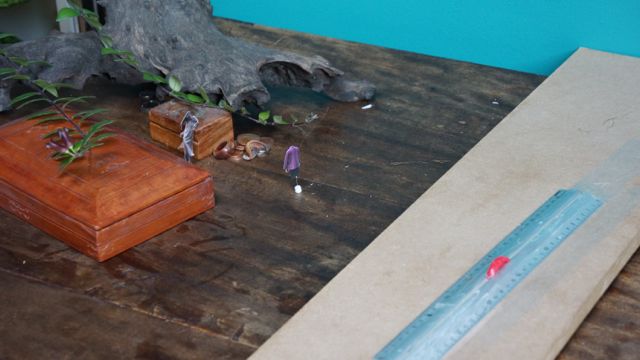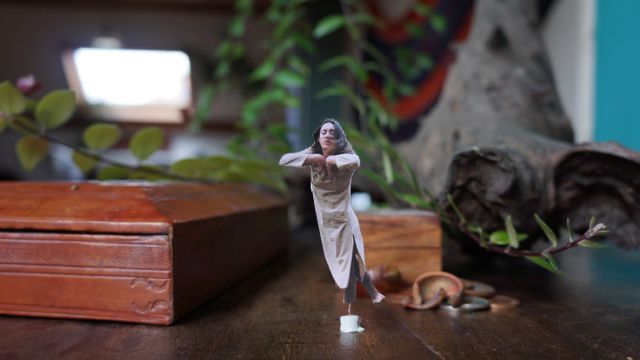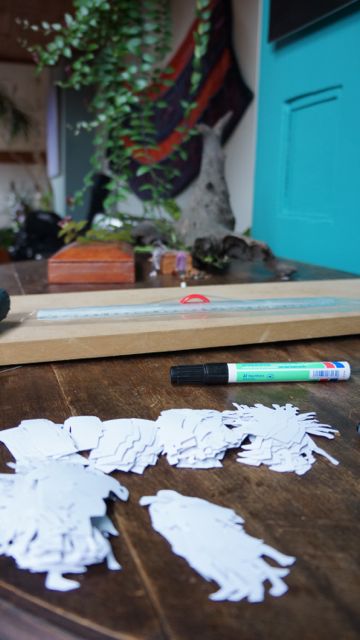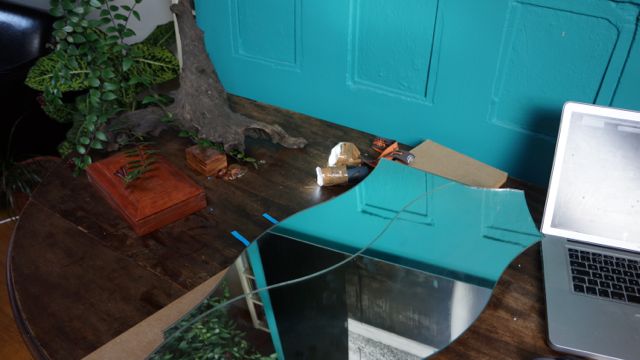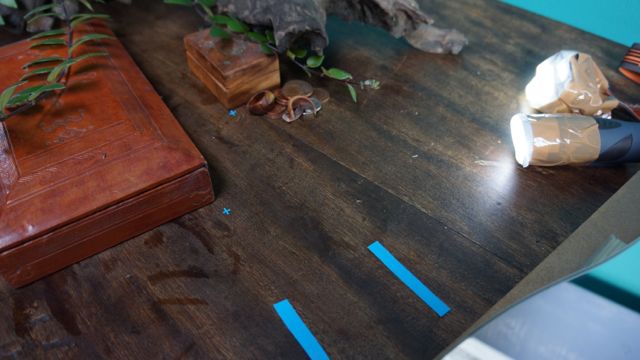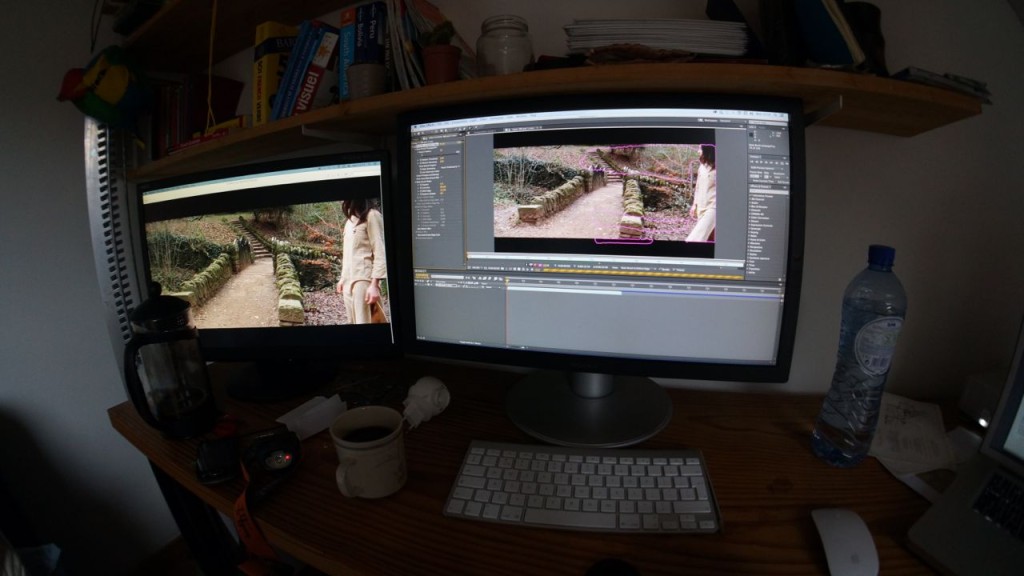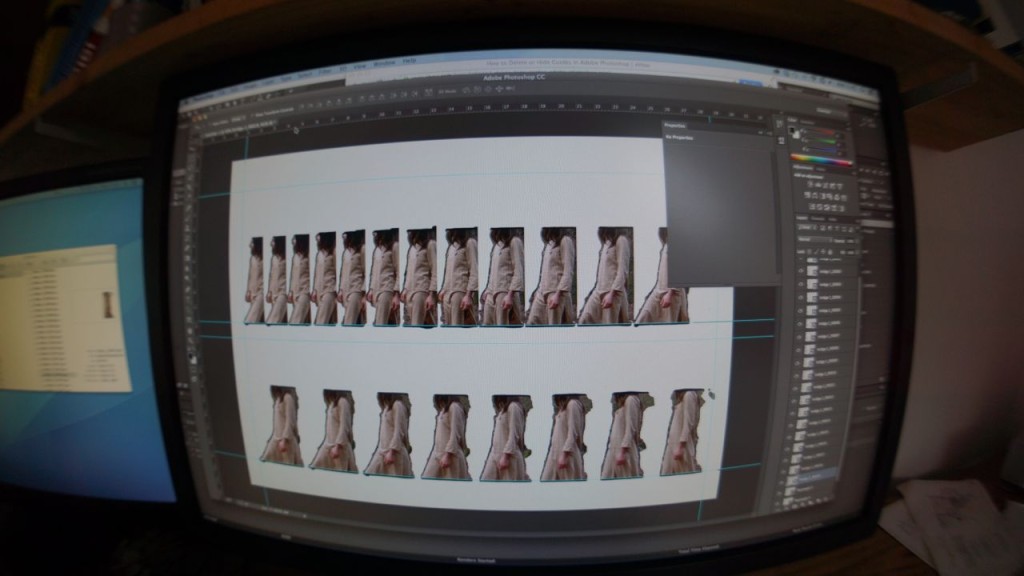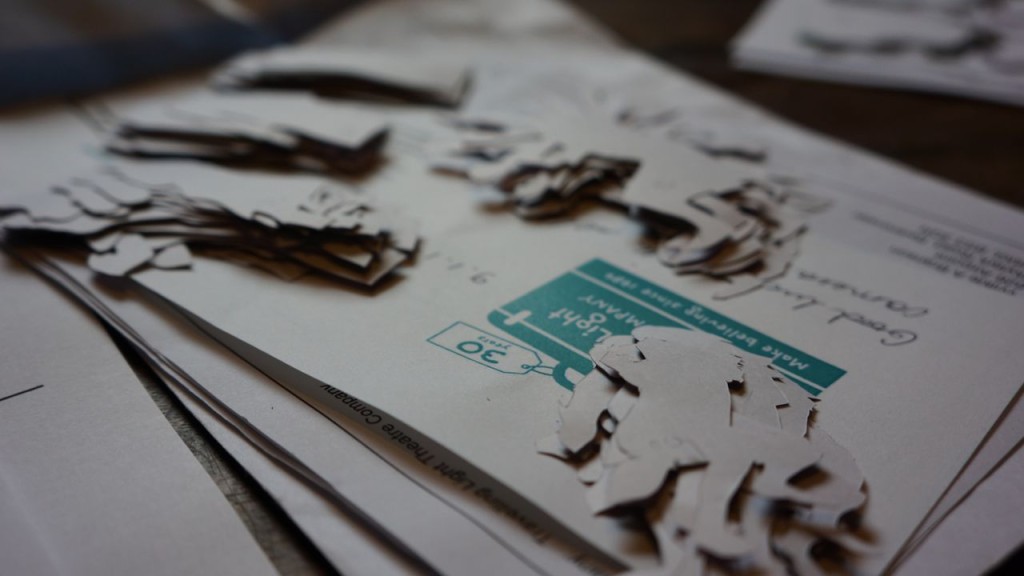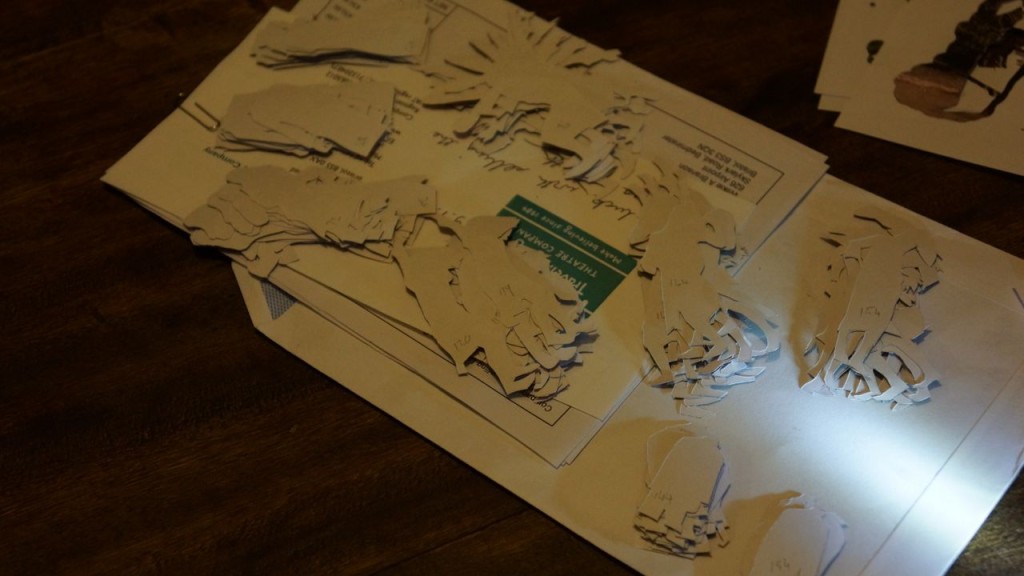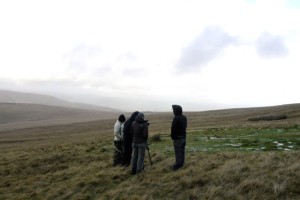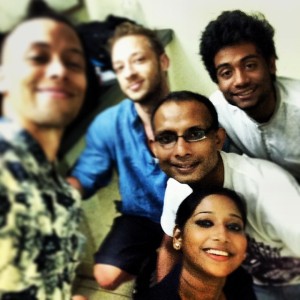
Photo: Joel Daniel
After a week off I find myself writing on the train again, on route to Bristol to begin the second half of the Boing! tour. 50 more shows will take me through Christmas and up to the new year. I had intended to write this final chapter of my “catching up” blog at my leisure whilst at home, but no sooner had I arrived a mass infestation of fabric eating carpet beetle was reveled to me. Subsequently my girlfriend and I spent most of our holiday hoovering beetle lave out from between the cracks in the floorboards and frequenting the local launderette, where we staged something of a strategic coup in order to facilitate the washing of some 200kg of assorted fabrics. After 50 man hours, a new vacuum, 15 cedar wood blocks, a liter of bleach and about fifty quid’s worth of loose change for the launderette, the question on everyone’s mind was; where did the bloody things come from? Which leads me neatly on to the last episode of my belated blog; India.
As I mentioned in my previous blog, myself and Joel Daniel visited India during the spring, touring White Caps. It was during this tour that the British Council started cooking up an idea for the development of a new work that would bring together Bboying and the traditional Indian dance of Kahtak. So in September we headed back out to Kolkata to collaborate with dancer Mital Sengupta of Rythmosaic and percussionist Shiladitya Bose on a 3 week residency. Working in Rythmosaic’s studio, we were to set about exploring the possibilities in the meeting points of the two dances, culminating in sharing’s at Kolkata’s ICCR and then at the Bengaluru International Arts festival.
Having worked across several Indian provinces already we were quite confident that we would be able to handle anything the subcontinent could throw our way. On our arrival at the airport, tired and bewildered at 4 am, it offered us this:
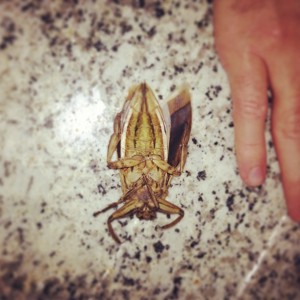
Photo: Joel Daniel
I couldn’t tell you what that is/was, only that its large (that’s my hand next to it) and that fortunately it was dead when we found it.
Needless to say work got underway in good time and beneath the thundery skies of the late monsoon season we set about discovering where our dances met and where they diverged. One of the most incredible things that struck me as we began to work was the significance and immense complexity of rhythmic patterns in Kathak. As Mitul recited, notated and danced various time-cycles and their rhythms, both the magnitude of possibility and the challenge that we were undertaking became clear. Then we discovered this:
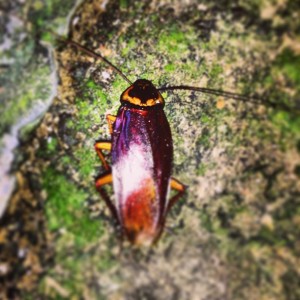
Photo: Joel Daniel
I believe it is quite difficult to kill a cockroach; the ones to be found in the studio first thing in the morning for the most part seemed to be on their last legs /backs. Which we were thankful for as nothing kills the creative mood more for the immersed dancer who is embracing the movement possibilities of a floor (rolling around) than a scuttling cockroach. Whist we are on the subject of cockroaches a good piece of advice for those visiting areas where they’re in abundance is to make sure that when you purchase your RAID bug killer to protect from mosquitos in the night, make sure you get the variety that JUST kills mosquitoes. What you will find is that if you get the kind which also kills cockroaches, spraying it around your room before bed will render all the cockroaches lurking behind things somewhat delirious. Before they die, they will come out and scuttle around in a disorderly fashion for several hours, climbing on and over everything they come across, including you.
Back to the work, one of the other great points of juxtaposition between our dance’s seemed to be the context. The story telling nature of Kathak and the way the dancer and musicians present various narratives though a codified language of gesture differs considerably from the cyphers and battles of Bboying. But even here, in the form of the exchange between the dancer and the tabla payer, there are parallels. In Kathak the call and response relationship between dancer and tabla leads to a percussive battle of sorts with each trying to delve deeper into the rhythm. This battle element and the improvisation it brings aligns strongly with bboying and gives the somewhat formal structure of the dances performance presentation a raw edge. We went to see an evening of traditional Kathak and again the complexity of just what we were trying to do became apparent. In amongst being drawn into this evening of storytelling and blisteringly complex rhythmical recital my leg started to itch. The next day it looked like this:
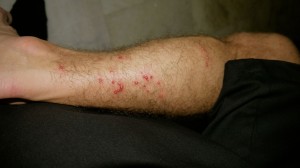
Photo: Joel Daniel
Those tiny little boils of puss are apparently the reaction to the toxic glands found on a spiders legs. They were quite sore but I was assured that they did not contain hundreds of incubating spider eggs. This proved to be true.
Despite the short time scales, the meeting of two very different worlds, and a spectrum of bug based challenges, we developed a short work to share and received great feedback on the avenues we’d perused. We were very fortunate to have Chhandak Pradhan with us documenting the process and below are a selection of some of his photos. We will be going back out to continue the work in March. To start refining what we are discovering into a performance, which will hopefully be touring later in 2014. It was an amazing experience to go out and work in India again and despite our insect encounters Wikipedia tells me its probably more likely the carpet beetles in my flat came in from the garden than the streets of Kolkata. And the train pulls into Bristol and the next leg of Boing! performances begins that brings me more or less up to date with my blogs.
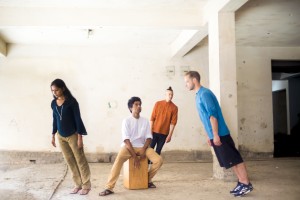
Photo: Chhandak Pradhan, British Council India

Photo: Chhandak Pradhan, British Council India
